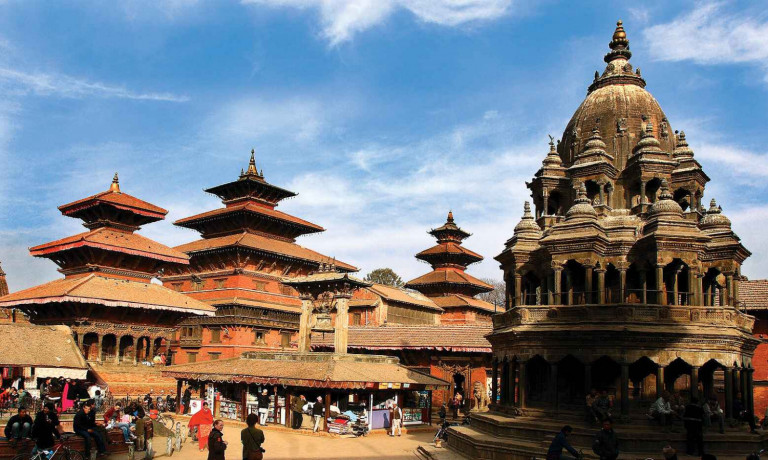Patan Durbar Square: A Jewel of Nepal's Cultural Heritage Professional
Jul 9th, 2024 at 12:57 Blogs Pātan 240 views Reference: 1376Location: Pātan
Price: Contact us
Patan Durbar Square: A Jewel of Nepal's Cultural Heritage
Nestled in the heart of the ancient city of Lalitpur, Patan Durbar Square stands as a testament to Nepal's rich history and cultural heritage. This UNESCO World Heritage Site is one of the three Durbar Squares in the Kathmandu Valley, alongside Kathmandu and Bhaktapur, and is renowned for its stunning architecture, intricate wood carvings, and vibrant history.
Historical Background
Patan Durbar Square, also known as Lalitpur Durbar Square, dates back to the medieval period, primarily flourishing during the reign of the Malla Kings between the 14th and 18th centuries. The square was the royal palace of the Malla Kings of Lalitpur and served as the center of their political and cultural activities. Over the centuries, the square has been a hub for religious, social, and economic activities, making it an integral part of the city's identity.
Architectural Marvels
Patan Durbar Square is a masterpiece of Newar architecture, which is characterized by its ornate woodwork, intricate carvings, and tiered pagoda-style temples. Some of the notable structures within the square include:
1. Krishna Mandir
The Krishna Mandir is perhaps the most iconic temple in Patan Durbar Square. Constructed entirely of stone, it features 21 golden pinnacles and intricate carvings that depict scenes from the Mahabharata and Ramayana. Built in the 17th century by King Siddhi Narsingh Malla, the temple is a prime example of Shikhara-style architecture.
2. Hiranya Varna Mahavihar (Golden Temple)
This Buddhist monastery, also known as Kwa Bahal, is famous for its golden façade and elaborate bronze sculptures. The monastery, which dates back to the 12th century, is a sacred site for Buddhists and a remarkable example of the coexistence of Hinduism and Buddhism in the region.
3. Sundari Chowk and Mul Chowk
These courtyards are part of the royal palace complex and feature exquisite woodwork and stone carvings. Sundari Chowk is known for its beautiful Tusha Hiti, a sunken water tank, while Mul Chowk is the central courtyard of the palace and serves as a venue for various ceremonies.
4. Taleju Bhawani Temple
Dedicated to the goddess Taleju, this temple is one of the most important religious sites in the square. It is usually open to the public only once a year during the Dashain festival.
Cultural Significance
Patan Durbar Square is not just a collection of ancient buildings; it is a living museum that reflects the cultural and religious diversity of Nepal. The square is a vibrant space where locals and tourists alike gather to observe traditional festivals, rituals, and daily activities. The art and architecture of the square showcase the craftsmanship and creativity of the Newar people, who have played a significant role in shaping the cultural landscape of the Kathmandu Valley.
Restoration and Preservation
The devastating earthquake of April 2015 caused significant damage to many structures within Patan Durbar Square. Since then, extensive restoration efforts have been undertaken to preserve and rebuild the damaged monuments. Organizations such as the Kathmandu Valley Preservation Trust (KVPT) have been instrumental in these efforts, working alongside local artisans to ensure that the square's historical integrity is maintained.
Visiting Patan Durbar Square
For visitors, Patan Durbar Square offers a rich tapestry of history, art, and culture. The square is easily accessible from Kathmandu and is a must-visit for anyone interested in exploring Nepal's heritage. Guided tours are available to provide deeper insights into the history and significance of the various monuments. Additionally, the square is surrounded by numerous shops, cafes, and art galleries, making it a delightful place to explore and experience the local culture.
Conclusion
Patan Durbar Square is a treasure trove of Nepalese art, architecture, and history. Its beautifully preserved temples, courtyards, and palaces offer a glimpse into the rich cultural heritage of the Kathmandu Valley. As a symbol of Nepal's enduring legacy, Patan Durbar Square continues to inspire awe and admiration among all who visit.


